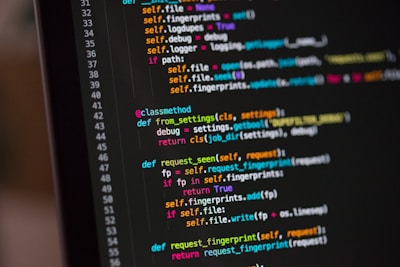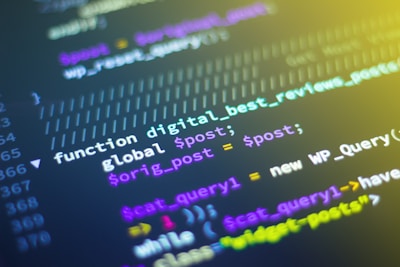The artificial intelligence landscape has exploded in recent years, bringing with it an ecosystem of powerful tools and frameworks that make developing AI applications more accessible than ever. Whether you're building your first machine learning model or architecting complex AI systems at scale, having the right tools in your toolkit can dramatically accelerate your development process and improve your results.
This comprehensive guide explores the ten essential AI development tools that every modern developer should be familiar with. From deep learning frameworks to experiment tracking platforms, from data processing libraries to model deployment services, we'll cover the tools that have become industry standards and explain why they matter. By the end of this article, you'll have a clear understanding of which tools to use for different aspects of your AI development workflow.
Why the Right Tools Matter
Before diving into specific tools, it's worth understanding why tool selection is so critical in AI development. Machine learning projects involve numerous complex steps including data collection and preprocessing, model architecture design, training and optimization, evaluation and testing, and deployment to production. Each stage presents unique challenges, and specialized tools have emerged to address these challenges efficiently.
Using appropriate tools can mean the difference between spending weeks debugging obscure issues and rapidly iterating on ideas. Good tools abstract away low-level complexities while maintaining flexibility for advanced use cases. They provide standardized interfaces that make collaboration easier and include optimizations that would take months to implement from scratch. Most importantly, they allow you to focus on solving problems rather than reinventing infrastructure.
Pro Tip: Don't feel obligated to master all these tools immediately. Start with the fundamentals that align with your current projects, then expand your toolkit as your needs evolve. Depth of knowledge in a few tools often trumps superficial familiarity with many.
The Essential Tools
1PyTorch: The Researcher's Choice
PyTorch has rapidly become one of the most popular deep learning frameworks, beloved by researchers and increasingly adopted in production environments. Developed by Facebook's AI Research lab, PyTorch offers an intuitive, Pythonic approach to building neural networks with dynamic computational graphs that make debugging and experimentation straightforward.
What sets PyTorch apart is its define-by-run approach, meaning the computational graph is built on the fly as operations execute. This makes it feel natural to Python developers and allows for dynamic architectures that can change based on input. The framework includes comprehensive tools for automatic differentiation, GPU acceleration, distributed training, and model optimization.
Best For: Research projects, rapid prototyping, custom neural network architectures, and projects requiring dynamic computation graphs.
Key Features: Dynamic computational graphs, intuitive Python API, strong community support, extensive ecosystem of libraries, excellent documentation, and seamless integration with Python's scientific computing stack.
2TensorFlow: Production-Ready Deep Learning
TensorFlow, developed by Google, remains a powerhouse in the deep learning ecosystem, particularly for production deployments. While it initially had a steeper learning curve than PyTorch, the introduction of TensorFlow 2.0 with eager execution by default has made it much more user-friendly while retaining its production-oriented strengths.
TensorFlow excels in deployment scenarios with TensorFlow Serving for model serving, TensorFlow Lite for mobile and embedded devices, and TensorFlow.js for browser-based inference. The framework offers comprehensive tools for building, training, and deploying models across various platforms, from research to production at massive scale.
Best For: Production deployments, mobile and edge device deployment, projects requiring cross-platform support, and large-scale distributed training.
Key Features: Robust deployment ecosystem, excellent production tooling, strong mobile and edge support, comprehensive visualization with TensorBoard, and extensive pre-trained models through TensorFlow Hub.
3Scikit-learn: Classical Machine Learning Made Easy
While deep learning dominates headlines, classical machine learning algorithms remain incredibly valuable for many real-world problems. Scikit-learn provides a consistent, easy-to-use interface for a wide range of machine learning algorithms including classification, regression, clustering, dimensionality reduction, and more.
Built on NumPy, SciPy, and matplotlib, scikit-learn integrates seamlessly with Python's scientific computing ecosystem. It's designed with a focus on ease of use and code readability, making it perfect for both learning machine learning concepts and building production systems. The library includes comprehensive documentation, numerous examples, and utilities for model selection, preprocessing, and evaluation.
Best For: Classical machine learning tasks, tabular data analysis, quick prototyping, educational purposes, and baseline model development.
Key Features: Simple and consistent API, comprehensive algorithm coverage, excellent documentation, robust preprocessing utilities, and efficient implementations of standard algorithms.
4Hugging Face Transformers: NLP Powerhouse
Hugging Face has revolutionized natural language processing by providing easy access to state-of-the-art transformer models. Their Transformers library offers thousands of pre-trained models for tasks including text classification, named entity recognition, question answering, translation, summarization, and text generation.
The library abstracts away much of the complexity of working with transformers while remaining flexible enough for advanced use cases. It supports both PyTorch and TensorFlow, includes tools for fine-tuning pre-trained models on custom datasets, and provides a model hub where the community shares trained models. This democratization of access to cutting-edge NLP models has accelerated development across the field.
Best For: Natural language processing tasks, leveraging pre-trained language models, text analysis applications, and conversational AI development.
Key Features: Thousands of pre-trained models, unified API across architectures, support for multiple frameworks, active community, extensive documentation, and easy fine-tuning capabilities.
5Weights & Biases: Experiment Tracking and Collaboration
Machine learning development involves extensive experimentation with different architectures, hyperparameters, and training configurations. Weights & Biases provides comprehensive experiment tracking, helping teams organize their work, visualize results, and collaborate effectively on machine learning projects.
The platform automatically logs metrics, hyperparameters, system statistics, and artifacts during training. Its interactive dashboards make it easy to compare experiments, identify trends, and share results with teammates. Features like hyperparameter sweeps, model versioning, and integration with popular frameworks make it invaluable for serious machine learning development.
Best For: Tracking experiments, team collaboration, hyperparameter optimization, model comparison, and maintaining reproducibility in research.
Key Features: Automatic logging, interactive visualizations, hyperparameter sweeps, model versioning, team collaboration tools, and extensive framework integrations.
6Jupyter Notebooks: Interactive Development Environment
Jupyter Notebooks have become the standard environment for data science and machine learning development, offering an interactive computing experience that blends code, visualizations, and narrative text. The notebook interface encourages exploratory development, making it easy to iterate on ideas and document your thought process.
Notebooks support multiple programming languages, rich media output, and integration with visualization libraries. They're excellent for prototyping, data exploration, creating tutorials, and communicating results to stakeholders. Modern notebook environments like JupyterLab provide IDE-like features while maintaining the interactive workflow that makes notebooks so valuable.
Best For: Data exploration, prototyping, creating reproducible analysis, teaching and learning, and communicating results through narrative documentation.
Key Features: Interactive code execution, rich media output, support for multiple languages, integration with visualization libraries, and shareable, reproducible documents.
7Docker: Containerization for Reproducibility
Reproducibility is a persistent challenge in machine learning development. Docker provides containerization technology that packages applications with their dependencies, ensuring consistent behavior across different environments. For AI development, this means you can capture the exact environment used to train a model and reproduce results reliably.
Docker containers make it easier to collaborate with team members, deploy models to production, and manage complex dependency requirements. They isolate projects from each other, preventing version conflicts and making it simple to switch between projects with different requirements. Combined with orchestration tools like Kubernetes, Docker enables scalable deployment of AI services.
Best For: Ensuring reproducibility, managing dependencies, deploying models to production, and creating consistent development environments across teams.
Key Features: Environment isolation, dependency management, reproducible builds, easy deployment, and seamless integration with cloud platforms.
8Apache Spark: Big Data Processing
When your datasets grow beyond what fits in memory, Apache Spark provides distributed computing capabilities for data processing at scale. Spark's MLlib library includes distributed implementations of common machine learning algorithms, allowing you to train models on massive datasets across clusters of machines.
Spark excels at ETL operations, feature engineering on large datasets, and batch processing of training data. It integrates well with various data sources and storage systems, making it a cornerstone of big data pipelines. While it has a learning curve, Spark becomes essential when dealing with truly large-scale data processing requirements.
Best For: Processing large-scale datasets, distributed machine learning, big data pipelines, and feature engineering on massive datasets.
Key Features: Distributed computing, in-memory processing, unified API for batch and streaming, MLlib for distributed machine learning, and integration with major data platforms.
9MLflow: End-to-End ML Lifecycle Management
MLflow addresses the challenge of managing the complete machine learning lifecycle from experimentation to production. This open-source platform provides tools for tracking experiments, packaging code into reproducible runs, and deploying models to various serving environments.
MLflow's tracking component logs parameters, metrics, and artifacts from your experiments. The projects component packages code in a reusable format. The models component provides a standard format for packaging models that can be deployed to various platforms. The registry manages the full lifecycle of models including versioning and stage transitions.
Best For: Managing ML workflows, tracking experiments, versioning models, standardizing deployment, and maintaining reproducibility across teams.
Key Features: Experiment tracking, model registry, project packaging, multiple deployment targets, framework-agnostic design, and comprehensive logging capabilities.
10FastAPI: High-Performance API Development
Deploying machine learning models often requires wrapping them in REST APIs. FastAPI has emerged as the go-to framework for building high-performance APIs in Python, offering automatic API documentation, data validation, and excellent performance through asynchronous request handling.
FastAPI's type hints integration provides automatic request validation and serialization, reducing boilerplate code and preventing common errors. The framework generates interactive API documentation automatically, making it easy for others to understand and test your endpoints. Its performance rivals frameworks in traditionally faster languages while maintaining Python's ease of development.
Best For: Building REST APIs for model serving, creating microservices, rapid API development, and high-performance web services.
Key Features: High performance, automatic API documentation, data validation through type hints, async support, easy to learn, and excellent production readiness.
Honorable Mentions
While our top ten covers the essentials, several other tools deserve recognition. Keras provides a high-level API that works with TensorFlow, making deep learning more accessible. OpenCV remains the standard for computer vision tasks. Pandas is indispensable for data manipulation and analysis. Ray provides distributed computing specifically designed for machine learning workloads. Each of these tools excels in particular niches and may belong in your toolkit depending on your specific needs.
Building Your AI Development Stack
The tools you choose should align with your project requirements, team expertise, and deployment environment. A typical deep learning project might use PyTorch or TensorFlow for model development, Weights & Biases for experiment tracking, Docker for reproducibility, and FastAPI for serving predictions. Data-heavy projects might incorporate Spark for preprocessing and scikit-learn for baseline models.
Start with the fundamentals and expand your toolkit gradually. Master PyTorch or TensorFlow first, then add experiment tracking and deployment tools as your projects grow more complex. Learn to use Jupyter Notebooks effectively for exploration, but transition to proper version control and development environments for production code. The key is building proficiency with tools that solve your actual problems rather than chasing trends.
Integration Strategy: The most powerful aspect of these tools is how they work together. PyTorch or TensorFlow for model development, Weights & Biases for tracking, MLflow for lifecycle management, Docker for containerization, and FastAPI for serving creates a comprehensive, production-ready stack.
Staying Current in a Fast-Moving Field
The AI tool landscape evolves rapidly, with new frameworks and platforms emerging regularly. Stay current by following major framework releases, participating in communities like Reddit's machine learning forums or specialized Discord servers, and experimenting with new tools on side projects. However, resist the temptation to constantly switch tools. Deep knowledge of a stable toolkit is more valuable than superficial familiarity with every new release.
Focus on understanding core concepts that transcend specific tools. The fundamentals of neural networks, optimization algorithms, and model evaluation remain constant even as frameworks evolve. When you understand these concepts deeply, adapting to new tools becomes straightforward because you recognize the underlying patterns they implement.
Open Source vs Commercial Tools
Most tools in our list are open source, reflecting the AI community's strong open source culture. Open source tools offer transparency, community support, and freedom from vendor lock-in. However, commercial platforms like Google Cloud AI, AWS SageMaker, and Azure ML provide managed services that can significantly accelerate development and deployment.
The decision between open source and commercial often depends on your resources and requirements. Startups and researchers typically favor open source for flexibility and cost considerations. Larger organizations might choose commercial platforms for enterprise support, compliance features, and reduced operational overhead. Many successful teams use hybrid approaches, leveraging open source tools for development and commercial platforms for production infrastructure.
Learning Resources and Best Practices
Each tool has extensive documentation, tutorials, and community resources. Start with official documentation and tutorials to understand core concepts and common patterns. Then explore community resources like blog posts, video tutorials, and example projects to see how others use these tools in practice. Don't hesitate to read source code for tools you use frequently—understanding their internals makes you more effective.
Practice is essential. Build projects that force you to use these tools in realistic scenarios. Contributing to open source projects using these frameworks deepens your understanding while giving back to the community. Participate in competitions on platforms like Kaggle to see how others approach problems and learn new techniques.
Conclusion: Empowering Your AI Journey
The tools we've explored represent the foundation of modern AI development. From frameworks that make building neural networks accessible to platforms that manage the complete ML lifecycle, these tools empower developers to focus on solving problems rather than fighting infrastructure. As the field continues evolving, staying proficient with these essential tools will serve you well regardless of which specific technologies gain or lose popularity.
Remember that tools are means to an end, not ends in themselves. The most important skills in AI development are problem-solving ability, understanding of fundamental concepts, and the creativity to apply techniques to real challenges. Master these tools not for their own sake but as instruments that enable you to build impactful AI applications.
Start building with these tools today. Pick a project that excites you, choose appropriate tools from this list, and begin experimenting. The combination of practical experience with these industry-standard tools and a solid foundation in AI fundamentals will position you to succeed in this dynamic and rewarding field. The future of AI is being built with these tools—now it's your turn to contribute to that future.



